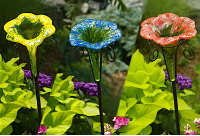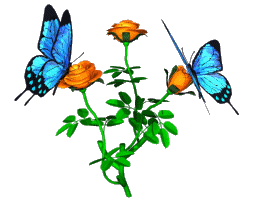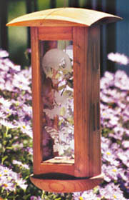- Bats & Butterflies, Bird Accessories, Butterfly Feeder, Misters and Birdbath Drippers, Uncategorized
Butterfly Feeders & Other Enticements
Entice butterflies to your yard with butterfly feeders and these simple tricks:
Butterfly feeders, either nectar or fruit can crafted pretty simply with household items. Over-ripe fruit (like bananas, melons or oranges) may be placed on a saucer and set on a tree trunk or stake. They’ll attract fruit flies, which butterflies consume for protein too. To hang butterfly feeders, use sisal rope or twine with a grapevine wreath for the base. The secret is sunny locations as butterflies love warm sun. If using nectar in a shallow bowl, add a sponge (a new one) to absorb the liquid as butterflies will consume the nectar in this fashion. Also, no need to purchase nectar, it’s the same solution used for hummingbirds. 1 Part sugar to 4 parts water. Never use anything but plain table sugar. Boiling is not necessary, but helps to dissolve the sugar more efficiently.
Water is another attractant, but butterflies won’t drink from an open source. Leaf misters are great, as they leave tiny puddles around where the mist falls. Butterflies will flit in and out of the gentle spray.
Using a waterless pond will attract the flying flowers too. Simply gather heat-absorbing rocks and place them on their side in a sunny location. Design a small circle, square, or free-form with rocks close together, an inch or two deep. Add sand and salts and keep moist to further attract butterflies. Line the area with plastic to keep the salts from seeping into your soil.
When placing feeders, misters, or rock baths, it’s best to have them in, or in close proximity to your butterfly garden. Use host plants and nectar plants for best results.
- Bats & Butterflies, Bird Accessories, Butterfly Feeder, Butterfly Houses, Misters and Birdbath Drippers, Uncategorized
Create a Habitat Along with Your Butterfly Feeder
Milkweed is a great, natural butterfly feeder, and so are nectar feeders. The sugar water recipe is the same as hummingbirds’ but butterflies will not use these feeders. Nectar feeders may be open, or have a sponge in them to absorb the liquid. A small dish works well, set on a porch rail, or hung from a shepherd’s hook or branch. Over-ripened fruit is adored by butterflies too, just be sure it does not mold.
Sadly, natural butterfly habitats are being decimated by the elimination of weeds and native grasses from yards, and chemical pesticides. Create a butterfly habitat in your garden with these simple tips:
Water: Butterflies will not drink from an open water source. They consume liquids by puddling, getting moisture from wet sand or soil, or shallow puddles. A leaf mister is a wonderful accessory to attract butterflies as the puddling process is constant.
Shelter: Mature, woody plants near your nectar producing flowers will provide butterflies with shelter during bad weather and at night. You may also want to consider a butterfly house.
Host plants: The host plants are ones that provide a site for butterflies to lay eggs and a food source for the emerging caterpillar. You may need to keep heavy mulch on these plants. Some host plants include: Thistle, Milkweed, Wild Cherry, Grasses, Nettle, Violet, Poplar, and Willow.
Food Sources for Nectar: Include Shrubs and annual flowers like; Azaleas, Lilac, Viburnums, Privets, Impatients, Marigolds, Alyssum, Cosmos, Verbena and Zinnias. Perennials include: Bee Balm, Butterfly Weed, Phlox, Seedum, Goldenrod, Coneflower, Thistle and more.
Start creating your butterfly-friendly habitat this spring and enjoy these flying flowers’ who will grace your yard!
-
Butterfly Houses in the Garden
Do they really use butterfly houses?
According to the Butterfly School, yes! And they even have simple, detailed directions to make your own butterfly houses. There’s tons of great information on the site pertaining to all things butterflies and moths. Copy and paste this address to check it out: http://www.butterflyschool.org
One great way to attract butterflies to your houses is to add their nectar inside. Using a small dish, with a new sponge or pot scrubber to absorb the liquid, place it in the bottom of the house. This acts as a fantastic attractant for these flying flowers! And…the nectar is a simple solution of sugar and water. The same mixture used for hummingbirds. One part sugar to four parts water. Never use any substitutes for the sugar, plain, table sugar is best.
Here’s to spring and the butterflies!



